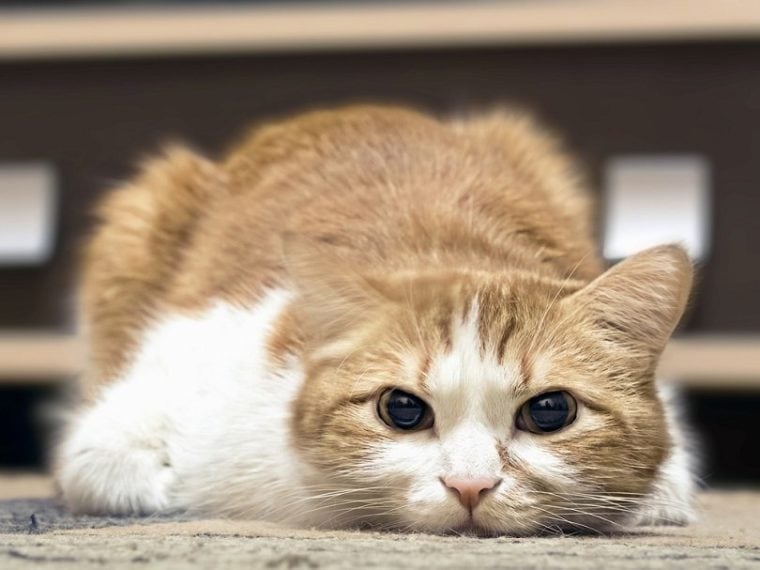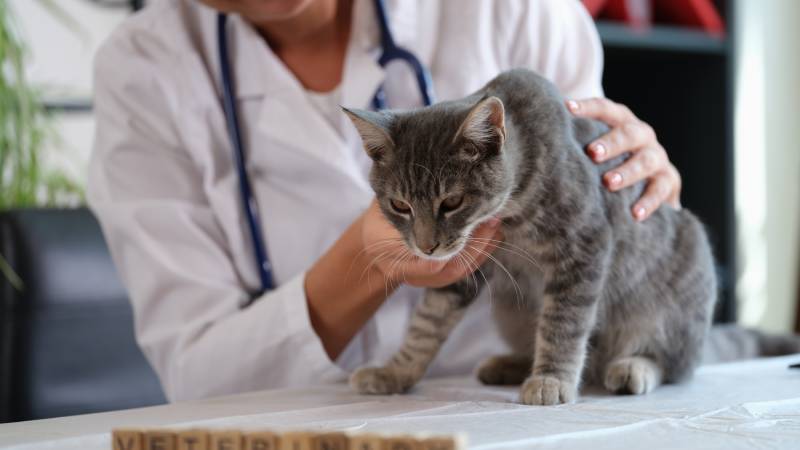
Click to Skip Ahead
Cats can develop anemia, or a reduction in red blood cell levels, for a variety of reasons 1. Anemia can occur due to blood destruction, blood loss, or loss of production. It is important to identify the underlying reason for the anemia to tailor treatments appropriately.
Anemia is dangerous to cats, as red blood cells are responsible for oxygenating the body. The severity of anemia can vary; however, patients with severe anemia or sudden blood loss are at risk of death. Below are four ways red blood cell counts can be increased in cats.
The 4 Options on How to Increase Red Blood Cells in Cats
1. Identify the Cause of Anemia
The appropriate treatment of anemia depends heavily on the underlying cause. The first thing that needs to be accomplished in a patient with low red blood cell numbers is full blood work and a physical examination. This will give insight into what possible problems the patient may be facing.
Examples of causes of red blood cell loss include parasitism, chronic kidney disease, immune-mediated hemolytic anemia, and neoplasia. These are just a small representation of all the possible causes of anemia. Due to the nature of the ailments, improvements to red blood cell levels are dependent on the treatment of the underlying disease process.

2. Blood Transfusions
For cats with severe anemia or cats with immune-mediated destruction of red blood cells, a blood transfusion may be an appropriate treatment. Blood transfusions involve the infusion of red blood cells from a donor cat into an anemic cat. Close monitoring of the patient is needed during the transfusion, and close monitoring of red blood cell levels is necessary after the transfusion.
Transfusions can quickly boost red blood cell levels and can provide improvements to a patient’s overall condition. Cats receiving blood transfusions will need to have their blood type identified, as cats possess antibodies against different blood types than their own. If a blood transfusion occurs using a different blood type than the recipient’s, the transfused blood cells will be destroyed by the patient’s immune system 2.
3. Erythropoietin and Varenzin-Ca1
Erythropoietin is a hormone created by the kidneys 3. This hormone stimulates red blood cell production. Cats with chronic renal disease often will develop anemia secondary to the lack of this hormone. Cats can be supplemented with erythropoietin to help stimulate red blood cell production by the bone marrow.
Erythropoietin products have been designed for humans, so their use is considered off-label in cats. A veterinarian will need to evaluate your pet and determine an appropriate dosing schedule; however, initially, erythropoietin is administered subcutaneously three times a week 4. Cats receiving erythropoietin must be closely monitored for signs of adverse effects.
The FDA conditionally approved the first product labeled for cats to treat anemia secondary to chronic kidney disease called Varenzin-CA1, which works by increasing erythropoietin production within the kidneys 5. This treatment is administered through the oral route once daily for 28 days. The treatment can be continued if needed after a weeklong break after 28 days of treatment.
Unfortunately, these products only benefit patients with chronic kidney disease and do not really serve a purpose in anemia that has occurred for other reasons.

4. Iron Supplementation
Although not as common, some cats who have not received appropriate nutrition may develop anemia secondary to iron deficiency. Alternatively, animals with chronic blood loss may also develop iron deficiency anemia due to the depletion of iron stores. Anemia linked to low levels of iron can improve with the feeding of nutritious food and iron supplementation. Diets linked to iron deficiency anemia are generally vegetarian or homemade without appropriate supplementation.
Patients receiving erythropoietin also benefit from iron supplementation, which is available through veterinarians.
Signs of Anemia
Patients suffering from anemia, or decreased red blood cell levels, can present in several ways, depending on the underlying cause of the red blood cell loss. Signs of anemia include:
Diagnosing Anemia in Cats
While diagnosing anemia in cats is straightforward, identifying the underlying cause of anemia can be more challenging. A patient is considered anemic when the packed cell volume (PCV) of red blood cells is less than 25%. A full physical examination and additional diagnostics, including a full blood panel, radiographs, FELV/FIV Test, bone marrow aspirates, and fecal test, may be recommended for a patient with anemia.

Prognosis
Cats suffering from anemia have a varied prognosis based on the severity of the anemia and the underlying cause. Patients with mild cases of anemia will have a better chance of recovery with appropriate intervention.
In Summary
Anemia can be life-threatening, and it is imperative that the underlying cause of anemia is timely identified so appropriate treatment can be initiated. It is important to follow veterinary recommendations regarding the treatment and monitoring of your cat. Ongoing monitoring will be necessary to facilitate adjustments to treatment plans.
Featured Image Credit: Nikolay Bassov, Shutterstock







